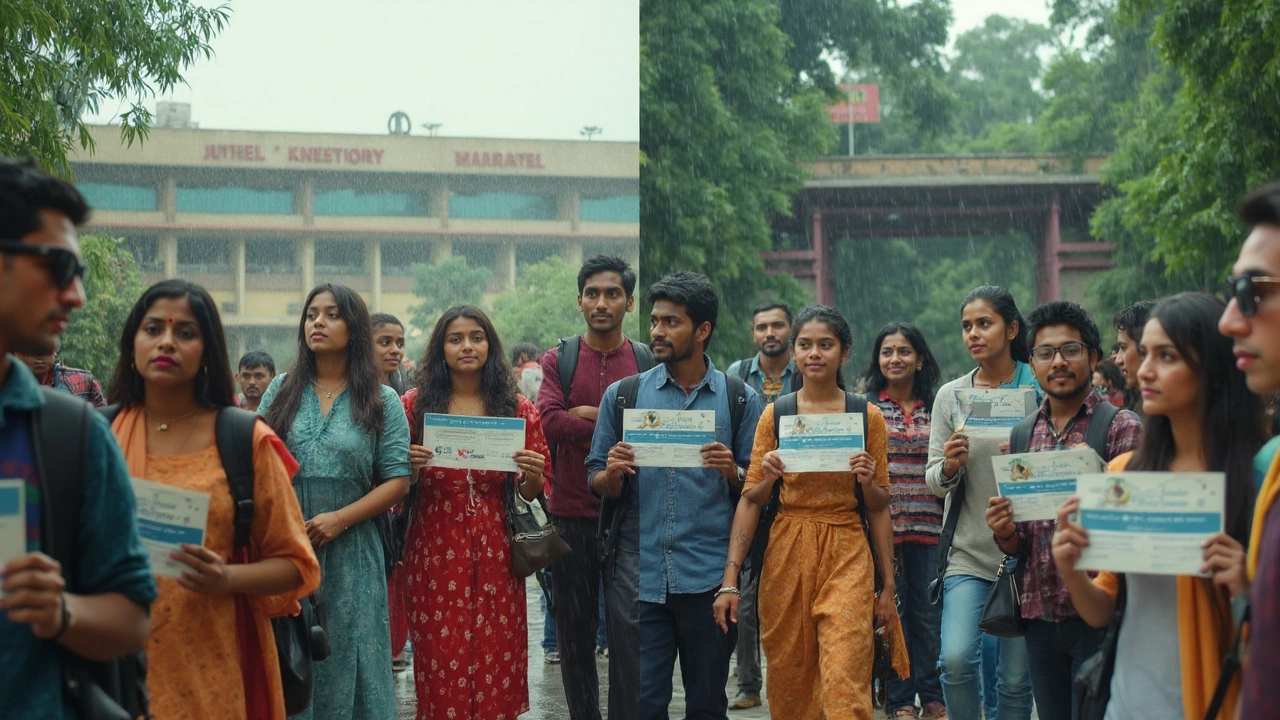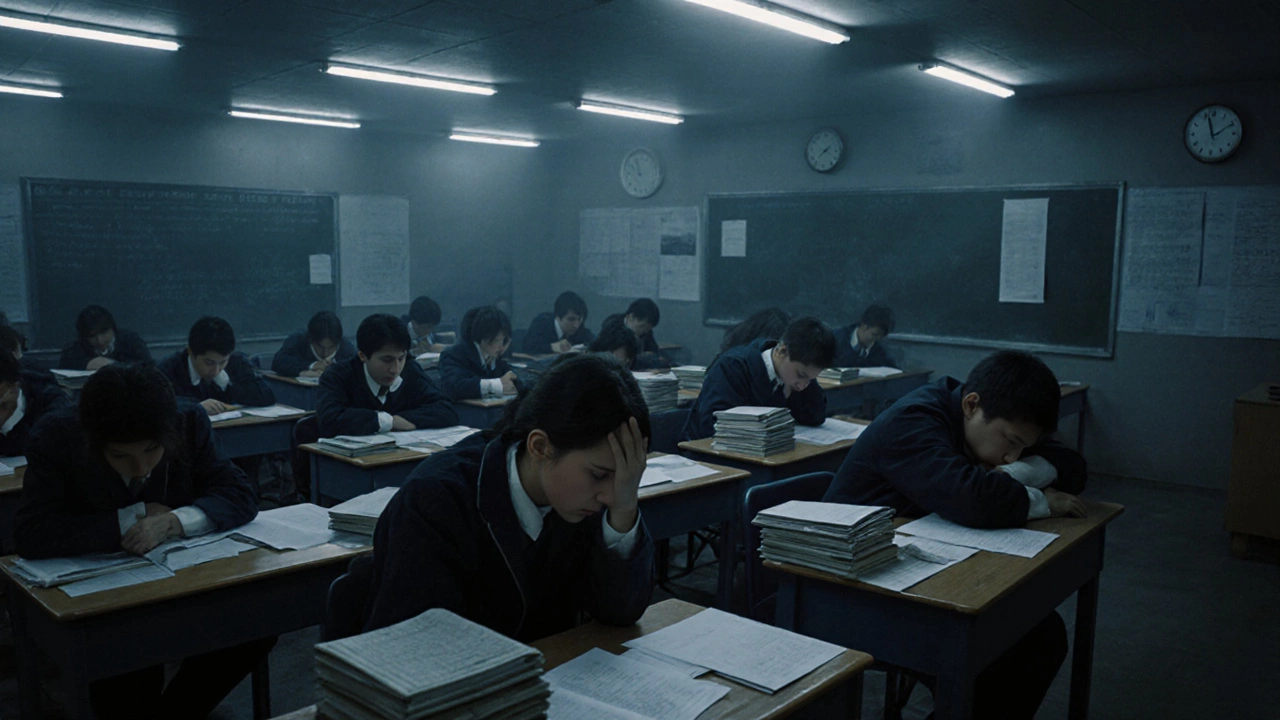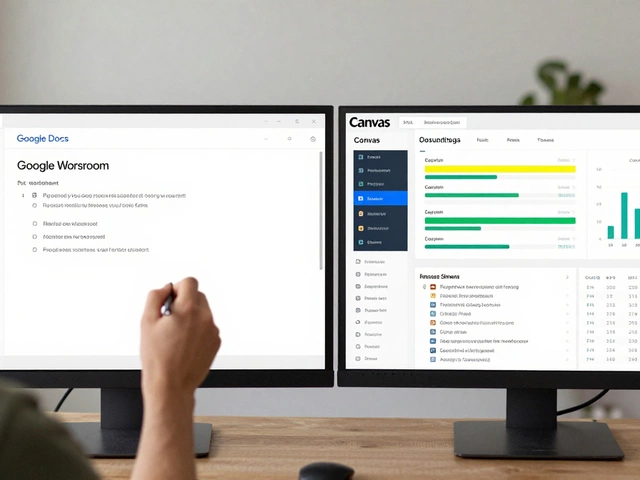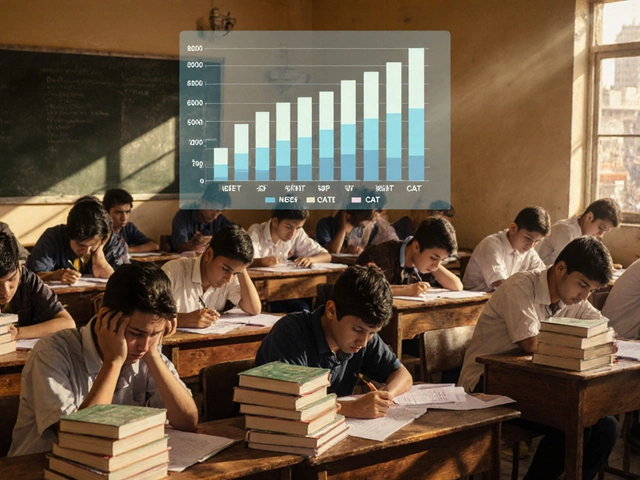The terms 'JEE Mains' and 'JEE Advanced' get tossed around so much that it’s easy to think they’re just the same monster with two heads. That’s not how it works. These two exams might be connected, but they play totally different roles if your goal is to step inside an IIT campus.
First up, you can’t just jump straight into JEE Advanced. You have to clear JEE Mains first, and there are strict cutoffs. That’s like clearing the group stage before the finals. And here’s a fun fact—over a million students take JEE Mains every year, but only about the top 2.5 lakh get a shot at JEE Advanced. That’s a brutal filter right out of the gate.
For anyone confused about what to focus on, or worried about whether the prep strategy for one works for the other, don’t stress. The differences between Mains and Advanced pop up in everything—who can sit for them, what kind of questions show up, even how colleges use your score. Knowing this stuff early makes your study time way more effective and way less stressful.
- Clear Purpose: Why These Two Exams?
- Eligibility and Who Can Apply
- Exam Format and Syllabus Differences
- Level of Difficulty and Competition
- What Ranks Get You: Admissions and Opportunities
- Smart Prep Tips: Navigating Both Without Burnout
Clear Purpose: Why These Two Exams?
So, why bother with both JEE Mains and JEE Advanced? Couldn’t there be just one big test for everyone? Actually, their whole setup is designed to make sure kids find the right path based on their strengths and what kind of college they’re aiming for.
JEE Mains is like your all-access ticket to a range of engineering colleges. If you clear it, you can get into National Institutes of Technology (NITs), Indian Institutes of Information Technology (IIITs), and other top-notch colleges across India. This exam mostly checks if you have a solid grip on the basics of Physics, Chemistry, and Math—the stuff you learn in school from class 11 and 12. Makes sense, right?
But the bar is raised with JEE Advanced. This one is only for those who crack Mains and want to give IITs a shot. The logic? The IITs want students who can handle trickier, out-of-the-box problems—ones that aren’t just about rote memory. So, Advanced dives deeper and asks you to think in different ways. It’s not just more of the same, it’s a different beast altogether.
Just to show how these exams open doors differently, check out this comparison:
| Exam | Where it gets you |
|---|---|
| JEE Mains | NITs, IIITs, GFTIs, and qualifying for Advanced |
| JEE Advanced | Admissions to IITs |
So here’s the bottom line: Mains is the filter. It decides who even gets a shot at the IIT dream. Advanced is the real test for that dream—it picks the few who fit into the IIT crowd. Both have a reason, and both are necessary if you want the full scoop on IIT JEE preparation.
Eligibility and Who Can Apply
Figuring out if you can sit for JEE Mains or JEE Advanced is a pretty important first step. Anyone who’s finished Class 12 or is about to, and has core subjects like Physics, Chemistry, and Maths, can apply for JEE Mains. Even if you’re trying the exam for the first time or the third, you’re good—Mains gives you three chances, spread across two years (year of passing 12th and the next year).
But once you get to JEE Advanced, things start tightening up. First, only students who clear the JEE Mains cutoff can even register for Advanced. That’s usually the top 2.5 lakh rankers, but this number sometimes changes a bit from year to year based on government rules.
Here’s how the basic rules compare:
- JEE Mains: Open to anyone who passed 12th (or is appearing), doesn’t matter which board you’re from.
- JEE Advanced: You have to pass JEE Mains and have a rank within the cutoff. Plus, only the top two attempts right after your 12th board year count for eligibility.
And watch out for the age factor. For Advanced, you have to be born on or after October 1, 2000 (as of this year, 2025). There are some relaxations if you’re from SC, ST, or PwD categories.
Let’s lay this out in a no-nonsense way:
| Exam | Who Can Apply | Age Limit | Attempts Allowed |
|---|---|---|---|
| JEE Mains | Class 12 passed/appearing, Physics, Chemistry, Maths required | No upper age limit (as of 2025) | 3 attempts, over 2 years |
| JEE Advanced | JEE Mains qualified and in top cut-off, 12th pass in past 2 years | Born on/after Oct 1, 2000 (with relaxations for some categories) | 2 consecutive years after 12th |
A final tip: Double-check the official information every year. Rules, cutoffs, and even the number of candidates moving up to Advanced can change without warning.
Exam Format and Syllabus Differences
The way JEE Mains and JEE Advanced are structured can make or break your study plan. If you assume they’re just clones, you’ll end up missing some big details that really matter.
For starters, JEE Mains is a single-paper test for each attempt, mostly computer-based (except the drawing section for B.Arch). You get three hours, and it's all about Physics, Chemistry, and Maths. The questions are mostly multiple choice (MCQs) with four options, and a few numerical value type questions thrown in. What’s wild? For every correct answer in MCQs, you snag 4 marks. One wrong move, you drop 1 mark due to negative marking. It’s pretty straightforward—no weird question types, and the focus is quick thinking and accuracy.
Here’s a breakdown of the JEE Mains paper:
- 90 questions total (30 each from Physics, Chemistry, Maths)
- A candidate needs to answer 75 out of 90 (25 from each subject)
- Mostly MCQs, some numerical value questions
- 3 hours to wrap it up
Now, JEE Advanced is a whole different beast. It’s got two compulsory papers (Paper 1 and Paper 2), both on the same day, and each is three hours long. You don’t get any real break. And the question styles? They’re tricky. You’ll see single/multiple correct MCQs, numerical value questions, even match-the-following and comprehension types. The marking scheme flips around from section to section—sometimes partial credit, sometimes negative marking, depends on the year.
Here’s what the JEE Advanced format usually looks like:
- 2 papers (Paper 1 and Paper 2), both mandatory
- Each paper has Physics, Chemistry, and Maths—mixed throughout
- Question types vary a lot: multiple choice (one or more correct), numerical, match-making, and even paragraph-based questions
- 6 hours of total exam time (compared to 3 for Mains!)
You might be wondering about the syllabus. JEE Mains sticks to the NCERT curriculum for Class 11 and 12 with predictable topics. JEE Advanced goes deeper; it expects you to understand concepts inside out and sometimes includes topics not in Mains (like electromagnetic waves or more advanced mathematical reasoning). It’s less about memory, more about logic and “can-you-crack-the-problem” type stuff.
Just to compare side by side, check this out:
| JEE Mains | JEE Advanced | |
|---|---|---|
| Number of Papers | 1 | 2 (both compulsory) |
| Duration | 3 hours | 6 hours (total) |
| Question Types | MCQs, Numeric | MCQs, Numeric, Match Making, Paragraph |
| Level of Questions | Direct, Formula-Based | Conceptual, Tricky |
| Syllabus | Class 11-12 NCERT | More depth, few extra topics |
So when you design your prep, don’t just copy-paste what you did for Mains and hope it’ll be enough for Advanced. They ask for different things—and your strategy needs to match.

Level of Difficulty and Competition
No sugarcoating here: JEE Mains is tough, but JEE Advanced takes the word 'challenging' to a whole new level. Let's break down where things really get serious.
First, the numbers. In 2024, about 1.2 million students sat for JEE Mains. Out of those, only the top 2.5 lakh scorers moved to JEE Advanced. You're battling giant numbers just for the ticket to the second exam.
Now, talk about types of questions. Mains sticks to a more straightforward approach—mostly single-answer multiple choice questions. Advanced, on the other hand, might give you an answer type you’ve never seen before: more than one correct, matching lists, even questions where you'll lose marks if you're sloppy. It’s designed to see who really understands concepts, not just who can memorize formulas.
| Exam | Question Type | Difficulty | Competition |
|---|---|---|---|
| JEE Mains | MCQs, Numerical | Moderate to Hard | Top 5-7% advance |
| JEE Advanced | MCQs (multi-correct), Integer, Match the following | Very Hard | Just 16,000 seats for all IITs |
Here’s the kicker: sometimes, even students who score 99 percentile in Mains struggle with Advanced because it isn’t just about speed. It's about solving completely new problems on the spot. Advanced problems often combine topics, so you can’t rely on shortcuts or pattern recognition—the examiners love creativity.
On top of all this, there’s the psychological pressure. The Mains crowd is huge, but there are 30+ NITs and other good colleges that accept Mains scores, which takes some edge off. But for JEE Advanced, everyone’s fighting for just around 16,000 IIT seats. That ramps up the intensity like nothing else.
If you're prepping, don't make the mistake of copying your JEE Mains strategy for Advanced. For Mains, focus on accuracy and quick calculations. For Advanced, spend time on deep understanding and flexible thinking. JEE Advanced wants to know if you can think on your feet, not just if you’ve memorized a book.
What Ranks Get You: Admissions and Opportunities
This is where the real difference between JEE Mains and JEE Advanced hits home. Your rank directly decides which colleges and courses you can get, and there’s a world of separation between what a good Mains score unlocks versus what cracking Advanced does.
If you score well in JEE Mains, you’re looking at options like NITs (National Institutes of Technology), IIITs (Indian Institutes of Information Technology), and a handful of other centrally funded colleges. Your All India Rank here matters more than your marks. For the famous IITs, though, the journey doesn’t end with Mains—you need to cross the cutoff and move on to Advanced.
Now, JEE Advanced is where you fight for a seat in the IITs. Only those who make it through the Mains cutoff (around the top 2,50,000 ranks) get a shot here. And it gets competitive—there are about 17,000 total IIT seats, and the kind of branch or IIT you end up in depends on your Advanced rank. Everyone wants computer science in the top IITs, so you’ll need a pretty stellar rank for that.
| Exam | Top Institutes Offered | Estimated Seats (2024 data) |
|---|---|---|
| JEE Mains | NITs, IIITs, GFTIs | ~50,000 |
| JEE Advanced | IITs | ~17,000 |
Here’s a quick fact: In 2024, you needed to be in the top 3,000-4,000 ranks in JEE Advanced to land a Computer Science seat in the old IITs. The lower your rank, the wider your choice—this holds true for any branch.
Getting into an IIT isn’t just about bragging rights. Companies that hire from IITs and NITs often filter candidates based on the branch and the rank. Even summer research programs and scholarships sometimes look at which exam you cleared and your rank.
- Use your Mains rank for options in NITs and IIITs where the cutoffs could be a bit more flexible depending on the branch and quota.
- Use your Advanced rank for direct entry to any of the IITs—but expect every seat and stream to be super competitive.
No matter which rank you land, make sure you know the latest year’s opening and closing ranks before filling out choices during counseling. Don’t just chase the name—think about the course, location, and where you see yourself in four years.
Smart Prep Tips: Navigating Both Without Burnout
Look, prepping for JEE Mains and JEE Advanced at the same time has stressed out even the most motivated students. Burnout is real, but it doesn’t have to steamroll you. Here’s how real toppers keep their heads and stay efficient.
Start by knowing the overlap. Most of the syllabus is the same, but JEE Advanced takes questions to a trickier level. Tackle basics first with Mains, then shift gears to tougher Advanced-style problems once those feel easy. Experts from FIITJEE say,
"Don’t try to master everything at once. Build solid basics with Mains material, then ramp up for Advanced by working out how to solve unfamiliar and multi-step problems."
If you plan out your months, you stay sharp. Think of it as two sprints and a marathon mixed together. Here’s a way to split things up:
- January-March: Stack your core concepts and go heavy on JEE Mains pattern mock tests. This is the gatekeeper; get comfortable here first.
- April: Flip to JEE Advanced style—focus on past Advanced papers, and push yourself with new question types.
Sleep isn’t optional. A study from IIT Delhi found students who slept seven hours or more scored up to 12% better than those who crammed all night. JEE Mains toppers have consistently said keeping a regular sleep schedule was non-negotiable.
| Prep Element | Mains | Advanced |
|---|---|---|
| Mock Tests/Week (Peak Time) | 2-3 | 2 (but tougher, analytical) |
| Revision Sessions | Concept Recaps | Application & Problem Solving |
| Time on Weak Topics | 40% | 30% |
Mix up your practice. Rotate through subjects—if you’re stuck slogging only physics for a week, you’re probably missing issues in math or chemistry. Tracking small wins (“Solved that one super tricky integration!”) will motivate you more than a random generic study log.
Lastly, take breaks. It’s not lazy. Even the best recommend a full day off once every couple weeks. It resets your brain and prevents you from hitting mental walls.
Diversify your sources—but don’t overdo it. NCERT, HC Verma, and previous years' papers cover what you truly need. Extra books are fine, but not if they muddy the basics or overload you.
If you manage your time, avoid self-sabotage, and stick to the plan, tackling both JEE Mains and JEE Advanced without burning out is doable—even for regular students, not just born geniuses.













